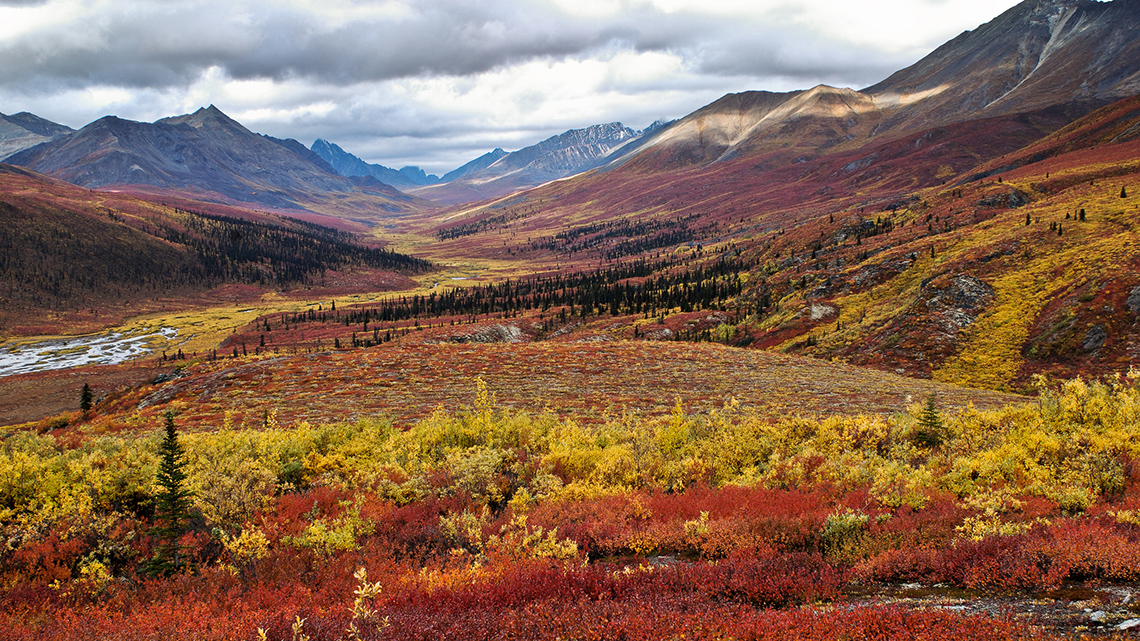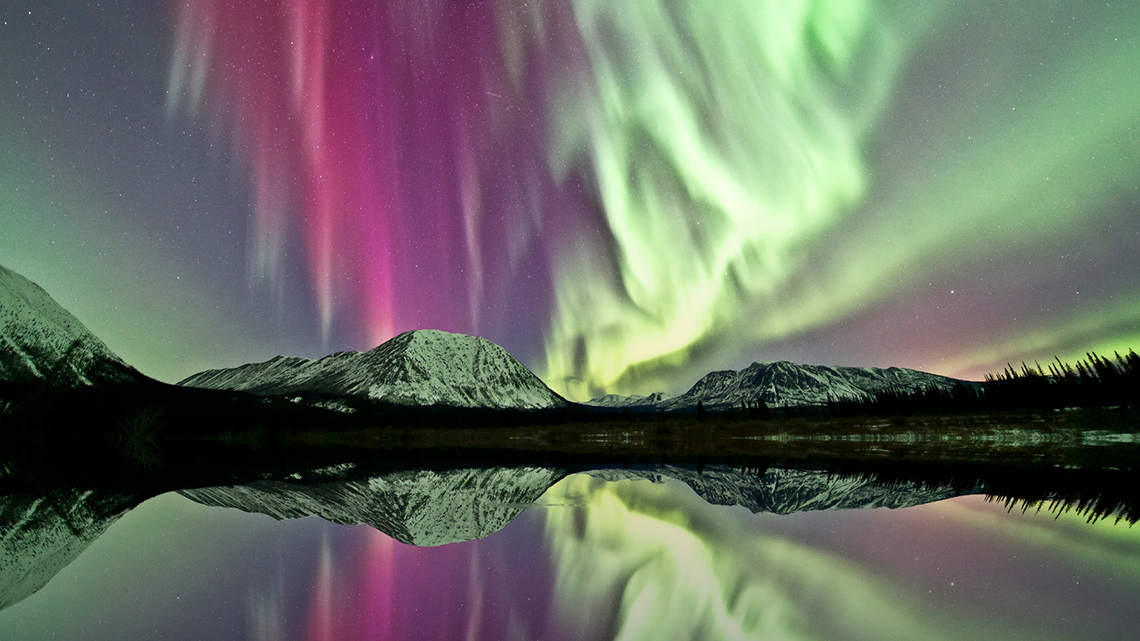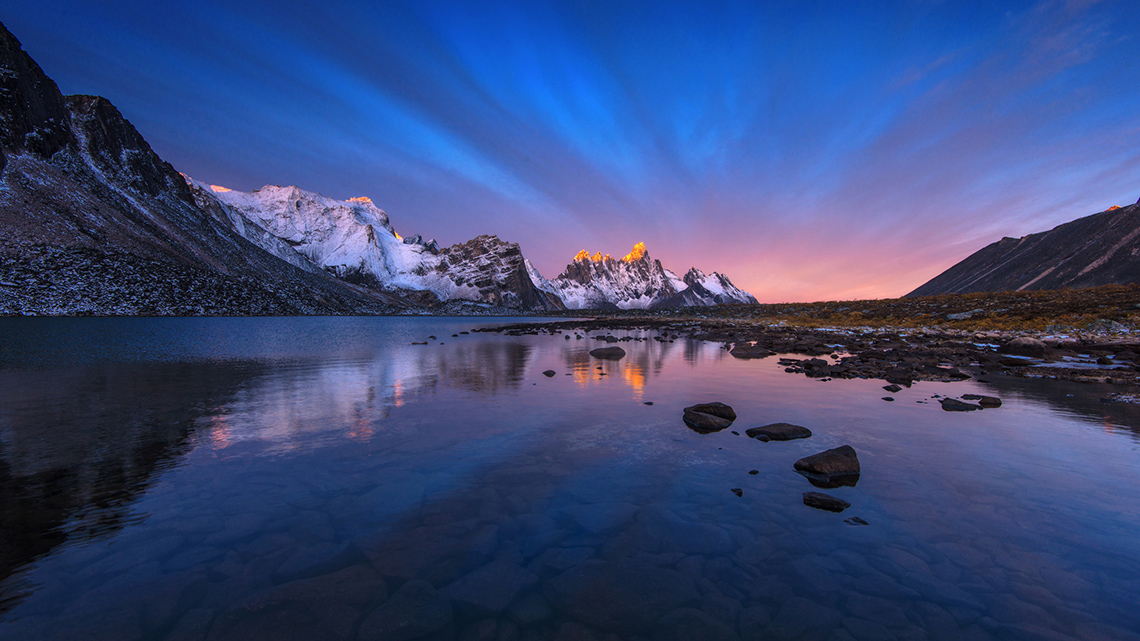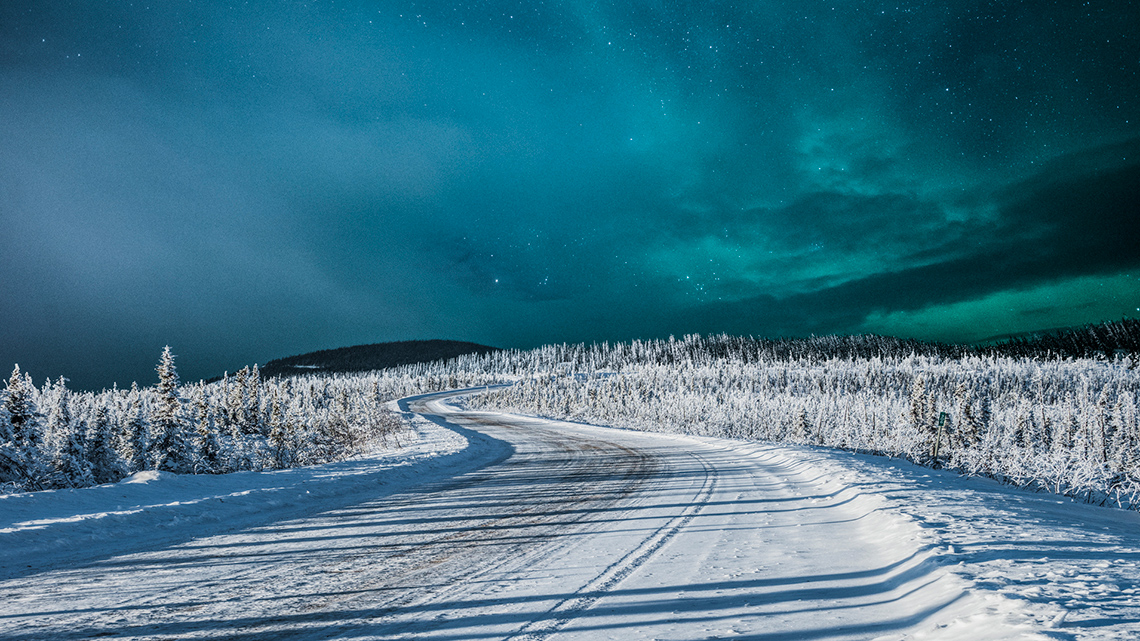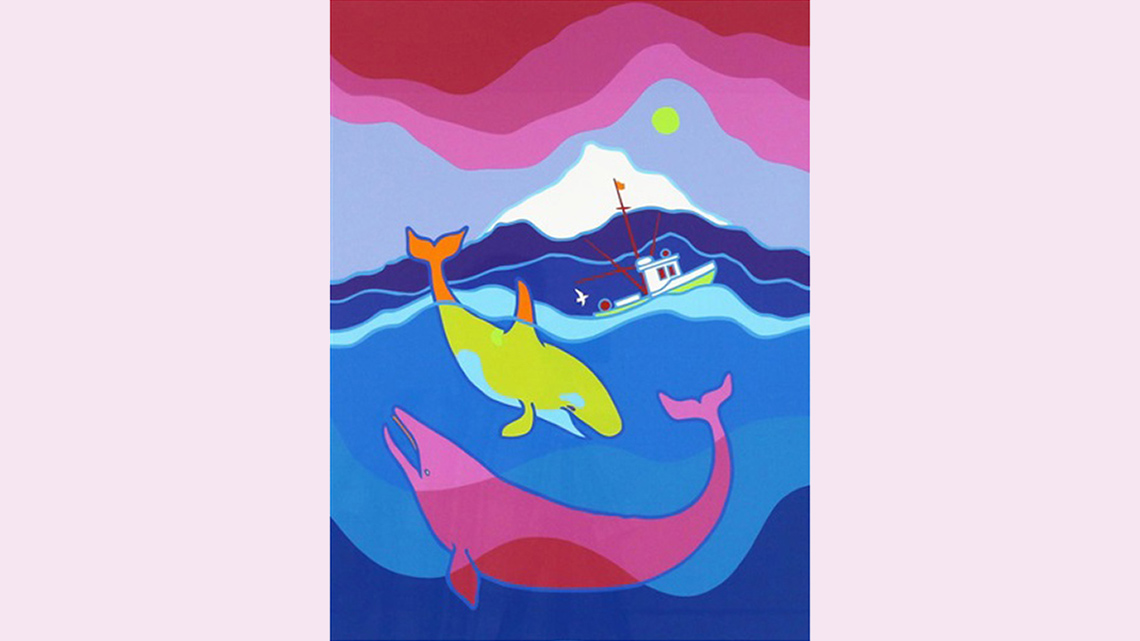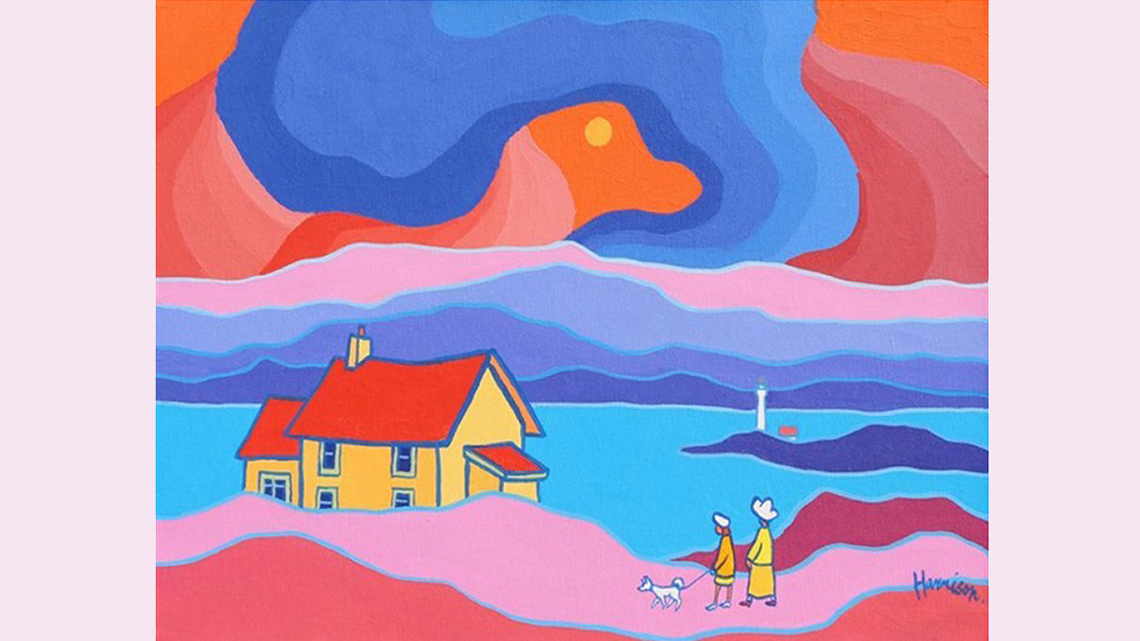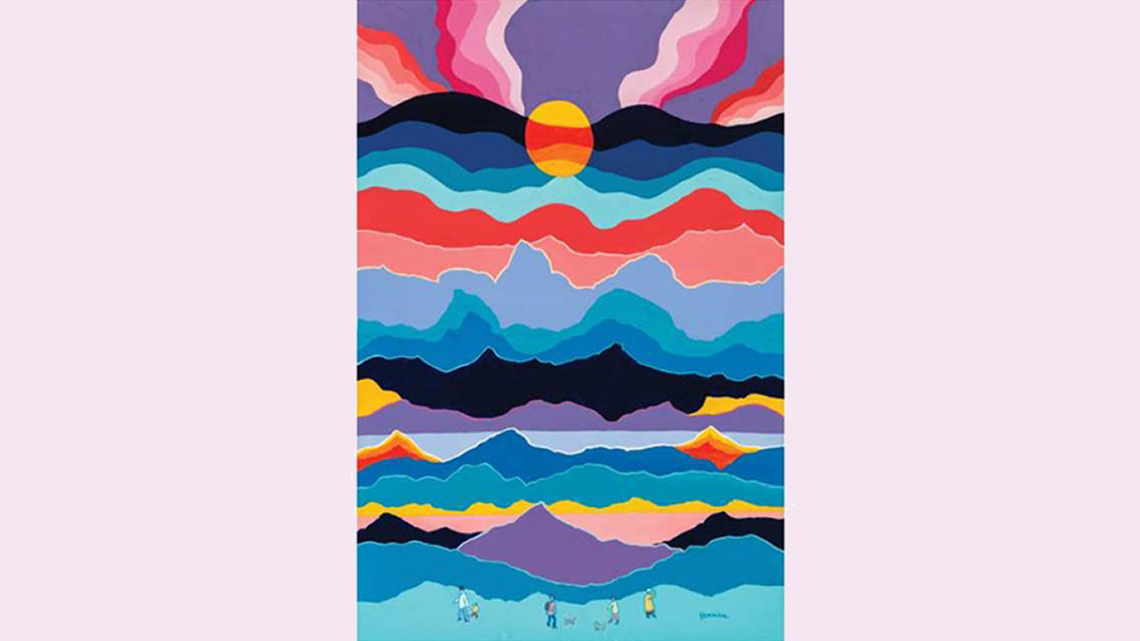Minds On
Let’s get started!
Notice and wonder
Explore the following images in the carousel.
- What do you notice about the landscape?
- What do you notice about the weather?
What is a landscape?
A landscape is an image of the outdoors. A landscape can have hills and trees. A landscape can have buildings and people.
Action
Get ready, get set…
Yukon territory
In the Minds On, you explored images of the Yukon Territory. With part of its territory stretching above the Arctic Circle, the Yukon is also the home of 15 First Nations communities.
Explore the following map. Where do you notice the Yukon territory?

This is a map of Canada. The map has all ten provinces and three territories. From left to right, or from the west coast to the east coast, the provinces are: British Columbia, Alberta, Saskatchewan, Manitoba, Ontario, Quebec, New Brunswick, Prince Edward Island, Nova Scotia, and Newfoundland and Labrador. The territories are on top of the provinces. Moving from the west to the east, the territories are: Yukon, Northwest Territories, and Nunavut.
Who is Ted Harrison?
Ted Harrison is a Canadian artist. He moved to the Yukon Territory when he was 24 years old to be a teacher.
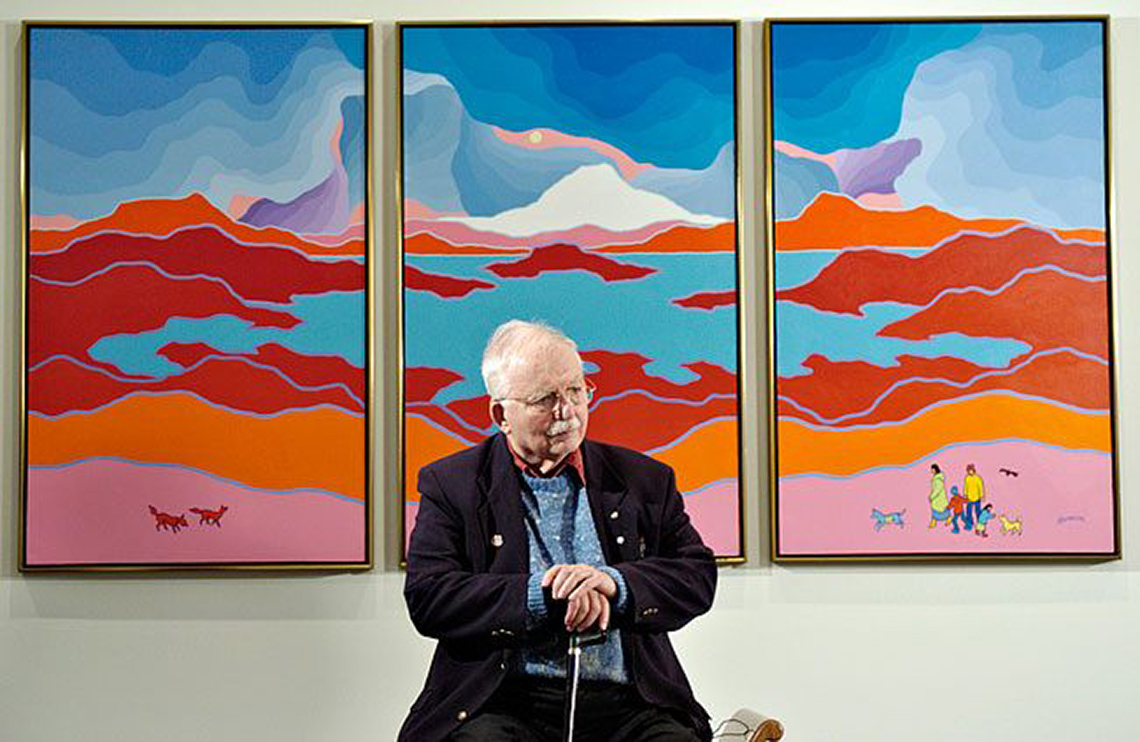
Ted Harrison painted the Yukon landscape. He was inspired by nature.
Press ‘Definition' to access what landscape means.
Let's explore some of Ted Harrison's paintings that share what he experienced living in the Yukon territory.
Now answer the following questions using a method of your choice:
What do you notice about Ted Harrison’s artwork? How do they make you feel?
What kind of colours and/or shapes does Ted Harrison use?
Press ‘Hint’ to help guide your thinking.
Explore the artwork for bright colours and simple shapes.
How does Ted Harrison create contrast to make things stand out? What do you notice about the outlines?
Contrast: A principle of design. Contrast is the use of opposite kinds of art elements. Contrast can be created by using rough and smooth textures. Contrast can also be created by using dark and light values.
Outline: an outline are the lines around a shape.
Press ‘Answer’ to access possible answers to check your understanding.
Possible answer #1: Sometimes there are outlines around the shapes, which helps create contrast and make the shapes stand out.
For example, in the artwork Whales Frolic, the whales shapes are outlined with light blue. This contrasts with their colours (yellow and orange, red and pink).
Possible answer #2: Ted Harrison also creates contrast by using cool colours and warm colours together.
For example, in the artwork Fair Day, he contrasts orange and blue in the sky of the painting.
Go!
Student Success
My environment
It's time to think about what is in you notice and enjoy in your own environment and/or community.
What would you like to include if you could create your own artwork?
Record your ideas using a method of your choice.
Share your thoughts with a partner, if possible.
Note to teachers: See your teacher guide for collaboration tools, ideas and suggestions.
Consolidation
Putting it all together
Your turn
Now that we have learned about the landscape of the Yukon territory and the painting style of Ted Harrison, it's your turn to make your own art.

What we know about Ted Harrison's art style:
- He paints things from his everyday life.
- He uses bright colours.
- He used simples shapes of buildings, people and animals.
- He outlines shapes and people with a dark or coloured line.
In your artwork, you may try to:
- paint/draw things from your everyday life (I.e. playing with your pet, playing at a park, getting groceries)
- use bright colours
- use simple shapes of buildings, people, and animals
- outline the shapes and people with a black or coloured line
Press the following tabs to access the options for this activity.
Use a digital application to create a drawing. Decide whether you would like to use colours, simple shapes, and/or lines in your work.
Student Success
Exploring digital creation options
When you are considering digital creation options, explore the variety of digital applications available!
Note to teachers: See your teacher guide for collaboration tools, ideas and suggestions.
Use art materials of your choice to complete your artwork.
Materials Needed
Materials needed
Possible materials you might need for this learning activity:

- a blank sheet of paper or an art journal
- drawing materials such as markers, crayons, and pencil crayons
- paint, paintbrush, and a jar of water
- an electronic tablet for drawing
- any other art materials you like to use
Safety
Before you begin:
Portfolio
Art portfolio
When you are done, add your artwork to your portfolio and answer the following questions using a method of your choice:
- What did you create? Why?
- Did you use colour, shape, and/or line to create your artwork?
Reflection
How do you feel about what you have learned in this activity? Which of the next four sentences best matches how you are feeling about your learning? Press the button that is beside this sentence.
I feel…
Now, record your ideas about your feelings using a voice recorder, speech-to-text, or writing tool.
